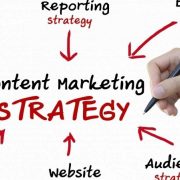Email Marketing: Best Practices and Strategies for Success

Email marketing is one of the most effective and cost-efficient marketing strategies for businesses of all sizes. When executed correctly, email marketing can help businesses build and maintain relationships with their customers, increase brand awareness, and drive sales. However, in order for email marketing to be successful, businesses must understand and follow best practices and strategies for success.
One of the key elements of successful email marketing is having a well-defined target audience. This means having a clear understanding of who your customers are and what their interests, needs, and preferences are. This information can be used to create targeted and personalized email campaigns that are more likely to resonate with your audience.
Another important factor in successful email marketing is having a clear and compelling subject line. Your subject line is the first thing that your audience sees and it must be attention-grabbing and relevant to the content of your email. A good subject line should be brief, relevant, and to the point.
The content of your email is also critical to its success. Your email should be well-designed, visually appealing, and easy to read. The content should also be relevant, valuable, and useful to your audience. Avoid using overly salesy language and focus on providing your audience with information and insights that they will find valuable.
It’s also important to consider the timing of your emails. This means choosing the right day and time to send your emails in order to ensure that they are seen and opened by your audience. Consider factors such as your target audience’s schedule, their location, and the type of email you are sending when determining the best time to send your emails.
Segmentation is another important aspect of email marketing. This involves dividing your email list into smaller groups based on characteristics such as interests, behaviors, or past purchases. By segmenting your email list, you can create targeted and personalized email campaigns that are more likely to resonate with your audience and drive results.
Another best practice for email marketing is to regularly test and optimize your campaigns. This means regularly testing different elements of your email campaigns such as the subject line, content, and call-to-action in order to see what works best and make improvements as needed.
Finally, it’s important to measure and analyze the results of your email campaigns in order to make informed decisions about future campaigns. This means tracking metrics such as open rates, click-through rates, and conversions, and using this information to optimize your campaigns and improve their effectiveness over time.
In conclusion, email marketing is a powerful marketing tool for businesses of all sizes, but it must be executed correctly in order to be successful. By following best practices and strategies for success, businesses can build and maintain relationships with their customers, increase brand awareness, and drive sales through email marketing. Whether you are a small business just starting out or a larger business looking to expand your reach, email marketing is an effective and cost-efficient marketing strategy that should be part of your marketing mix.






